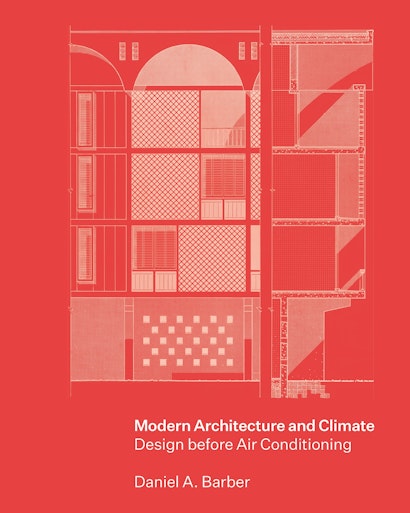This virtual talk will discuss the role of climate and the management of thermal interiors in the development of modern architecture. After a summary of developments in the inter-war work of Le Corbusier in Spain and Irmãos Roberto in Brazil, postwar developments in the the tri-state area will be examined, including the Princeton-based research of Victor and Aladar Olgyay and the House Beautiful/AIA ‘Climate Control’ project. Emphasis will be placed on how knowledge of climate patterns led to a range of innovative design strategies, in both suburban homes and urban skyscrapers. These buildings maintain a potent relevance in light of contemporary challenges for the energy-efficient conservation of modern buildings.
This program coincides with the recent publication of Daniel Barber’s Modern Architecture and Climate: Design before Air Conditioning (Princeton University Press, 2020.) It explores how leading architects of the 20th century incorporated climate-mediating strategies into their designs, and shows how regional approaches to climate adaptability were essential to the development of modern architecture.
Participants may purchase the book with a 30% discount and free shipping through October 15, 2020. Please click here and enter promo code MAC-FG.
About the Book
Modern Architecture and Climate explores how leading architects of the twentieth century incorporated climate-mediating strategies into their designs, and shows how regional approaches to climate adaptability were essential to the development of modern architecture. Focusing on the period surrounding World War II—before fossil-fuel powered air-conditioning became widely available—Daniel Barber brings to light a vibrant and dynamic architectural discussion involving design, materials, and shading systems as means of interior climate control. He looks at projects by well-known architects such as Richard Neutra, Le Corbusier, Lúcio Costa, Mies van der Rohe, and Skidmore, Owings, and Merrill, and the work of climate-focused architects such as MMM Roberto, Olgyay and Olgyay, and Cliff May. Drawing on the editorial projects of James Marston Fitch, Elizabeth Gordon, and others, he demonstrates how images and diagrams produced by architects helped conceptualize climate knowledge, alongside the work of meteorologists, physicists, engineers, and social scientists. Barber describes how this novel type of environmental media catalyzed new ways of thinking about climate and architectural design.
Extensively illustrated with archival material, Modern Architecture and Climate provides global perspectives on modern architecture and its evolving relationship with a changing climate, showcasing designs from Latin America, Europe, the United States, the Middle East, and Africa. This timely and important book reconciles the cultural dynamism of architecture with the material realities of ever-increasing carbon emissions from the mechanical cooling systems of buildings, and offers a historical foundation for today’s zero-carbon design.
Daniel A. Barber is associate professor of architecture at the University of Pennsylvania Weitzman School of Design. He is the author of A House in the Sun: Modern Architecture and Solar Energy in the Cold War. He lives in Philadelphia.
